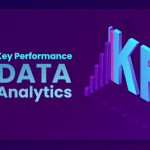In recent years, Instagram has seen an increasing number of businesses, developers, and influencers utilizing its API for various purposes. The platform’s expansive user base and the power of its visual content have made it a go-to for businesses looking to reach potential customers.
However, with the growing interest in using Instagram API to automate, strategize, and track user metrics has come to a need for the platform to maintain control over its API’s access. As a result, Instagram has released several changes to its API over the past few years in order to better regulate who can access and use its data.
In this article, we’ll explore some of the most recent changes that Instagram has made to its API and how they affect businesses, developers, and influencers.
The first change that Instagram implemented was the restriction of access to user data. Previously, anyone with a valid token could access the full range of user data available on the platform.
How to Create an Instagram App Using the New API
Creating an Instagram app is a great way for businesses to reach their target audience and grow their brand. The new API, released in April 2020, presents developers with more options than ever before for customizing and expanding their applications.
To get started, you will need to create an Instagram developer account and set up your application on the Instagram Developer portal. Once you have done this, you will be able to access the APIs and start creating your app.
The first step is to create a back-end structure for your app that can interact with Instagram’s API. This includes setting up an authentication system and designing a database schema that stores user data such as profile pictures, captions, and hashtags. Once this is done, you can begin building the UI/UX of your app. This includes creating a login page to authenticate users, as well as designing the layout and features of the user interface.
What to Expect with the Upcoming Instagram API
Instagram recently announced the launch of its upcoming API, and it promises to revamp the way developers interact with their service. With the new and improved Instagram API, developers can expect a number of changes that will help them build even more powerful applications.
One of the most significant changes in the upcoming API is an update to its Graph API. This will provide developers with better access to user data, allowing them to build custom experiences tailored to their apps and websites. This could include deeper insights into user activity, more granular control over media objects, and the ability to comment on or like posts programmatically.
In addition, Instagram is introducing an API for its Stories feature. This will allow developers to create custom experiences based on Stories data, such as displaying a user’s most recent Stories or integrating with other applications.
3 Ways Businesses Can Benefit from the New Instagram API
Instagram has recently released a brand new API aimed at providing businesses with more ways to access and analyze Instagram data. This new API enables businesses to boost their brand visibility, better engage with customers and gain valuable insights into customer behavior. Here are five key ways businesses can benefit from the new Instagram API:
- Enhanced Brand Visibility: With the new API, businesses can access analytics to better understand how their content is performing on Instagram. This will allow them to adjust their strategy and post more engaging content that resonates with their target audience. Businesses can also view detailed insights about specific posts, such as likes, comments, and impressions.
- Improved Advertising Campaigns: The new API provides businesses with the ability to track and monitor ads in real-time. This allows businesses to continually adjust their campaigns based on performance, ensuring they are getting the most out of their ad spend.
- Deeper Customer Insights: Businesses can now use data from Instagram posts to gain a better understanding of customer behavior. From the types of content, customers are engaging with to which hashtags, products, and services are most popular, businesses can use this data to tailor their marketing strategies.








